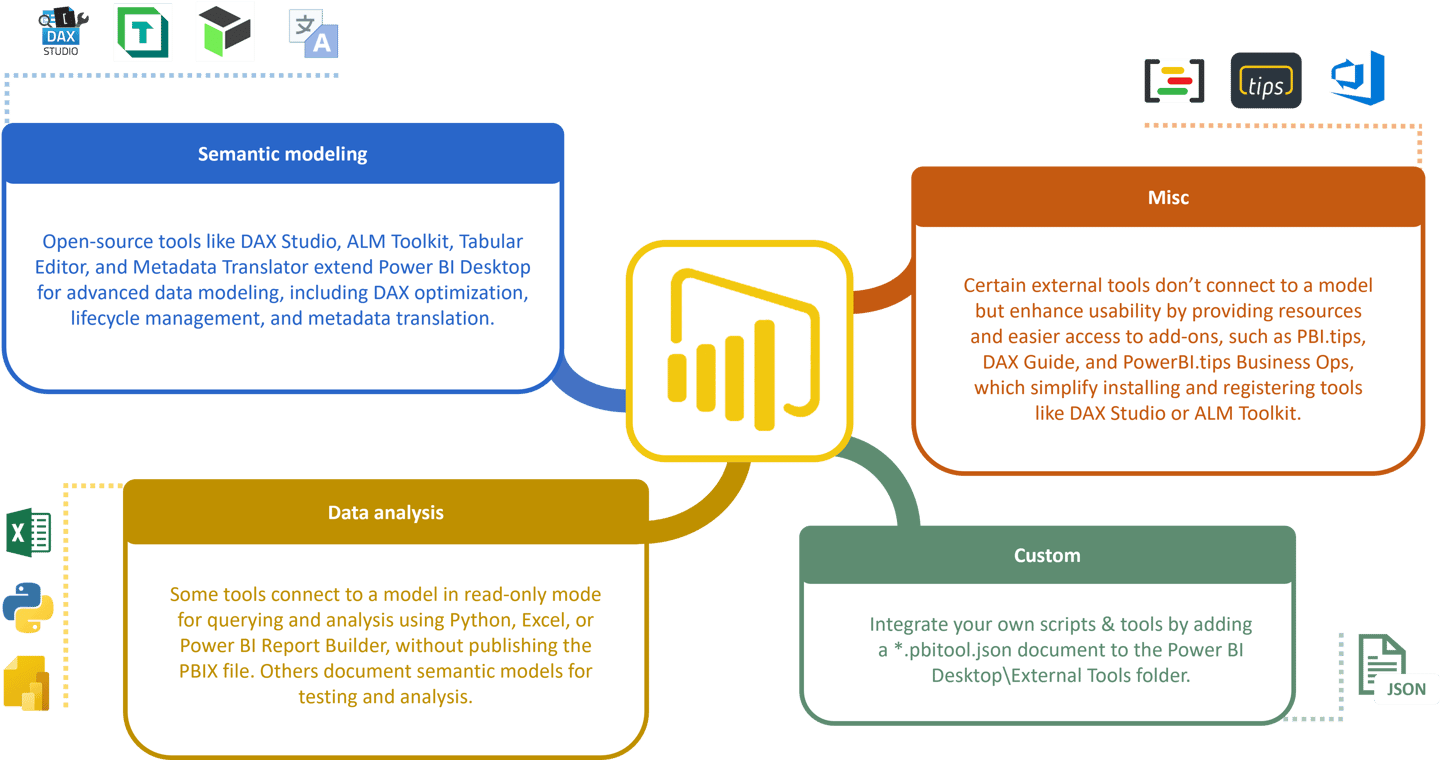

Power BI Extensions
Unlocking Advanced Capabilities with External Tools
Power BI is already one of the most complete business intelligence platforms available, but its power can be extended even further with specialized tools and extensions. These external solutions provide advanced features for data modeling, performance tuning, and development workflows, giving analysts and developers more flexibility and control.
In this article, we will look at some of the most important Power BI extensions and explain how they can enhance the overall experience.
Why Extensions Matter
While Power BI delivers strong functionality out of the box, enterprise-level projects often require fine-grained control over models, advanced debugging, or automation of repetitive tasks. Extensions fill these gaps by offering specialized capabilities that integrate directly into Power BI Desktop or the broader analytics ecosystem.
Key Power BI Extensions and Tools
Tabular Editor
Tabular Editor is one of the most widely used external tools for Power BI developers. It allows direct editing of tabular models, including measures, calculated columns, and hierarchies, in a structured and efficient way.
Enables advanced scripting for repetitive tasks
Supports best practices like measure templates and metadata management
Integrates seamlessly with version control systems for enterprise workflows
DAX Studio
DAX Studio is the go-to tool for working with DAX queries in depth. It provides a professional environment for writing, testing, and analyzing queries against Power BI models.
Offers advanced query editing with syntax highlighting and IntelliSense
Provides performance diagnostics to identify bottlenecks
Enables export of query results for further analysis
Bravo for Power BI
Bravo is a free community-driven tool developed by SQLBI, designed to simplify and enhance common Power BI tasks.
Helps format and optimize DAX code automatically
Offers advanced model analysis and performance insights
Simplifies the management of dates tables and measures
ALM Toolkit (Analysis Lifecycle Management Toolkit)
The ALM Toolkit is focused on version control, deployment, and collaboration. It allows teams to compare and merge Power BI models, which is essential in large enterprise environments.
• Compare schema differences between models
• Merge changes safely and consistently
• Integrate with DevOps workflows to ensure proper governance
How Extensions Empower Organizations
By adopting these extensions, organizations can:
Improve model quality and maintainability
Optimize performance for large datasets
Enable better collaboration between teams
Streamline governance and deployment processes
For consultants and advanced users, these tools provide the level of control and sophistication needed to deliver enterprise-grade analytics solutions.
Conclusion
Power BI’s flexibility is one of its greatest strengths, and its ecosystem of external tools makes it even more powerful. From Tabular Editor for advanced modeling, to DAX Studio for deep query analysis, to Bravo for optimization, and ALM Toolkit for governance and deployment, each extension adds unique value to the platform.
By combining these tools with Power BI’s core functionality, organizations can build robust, scalable, and efficient analytics solutions that go beyond standard reporting.

Contact Us
Get in touch to transform your data into business value.
MB Data Expertise
Transforming data into actionable
business intelligence solutions.
© 2025. All rights reserved.
Axel Berron

